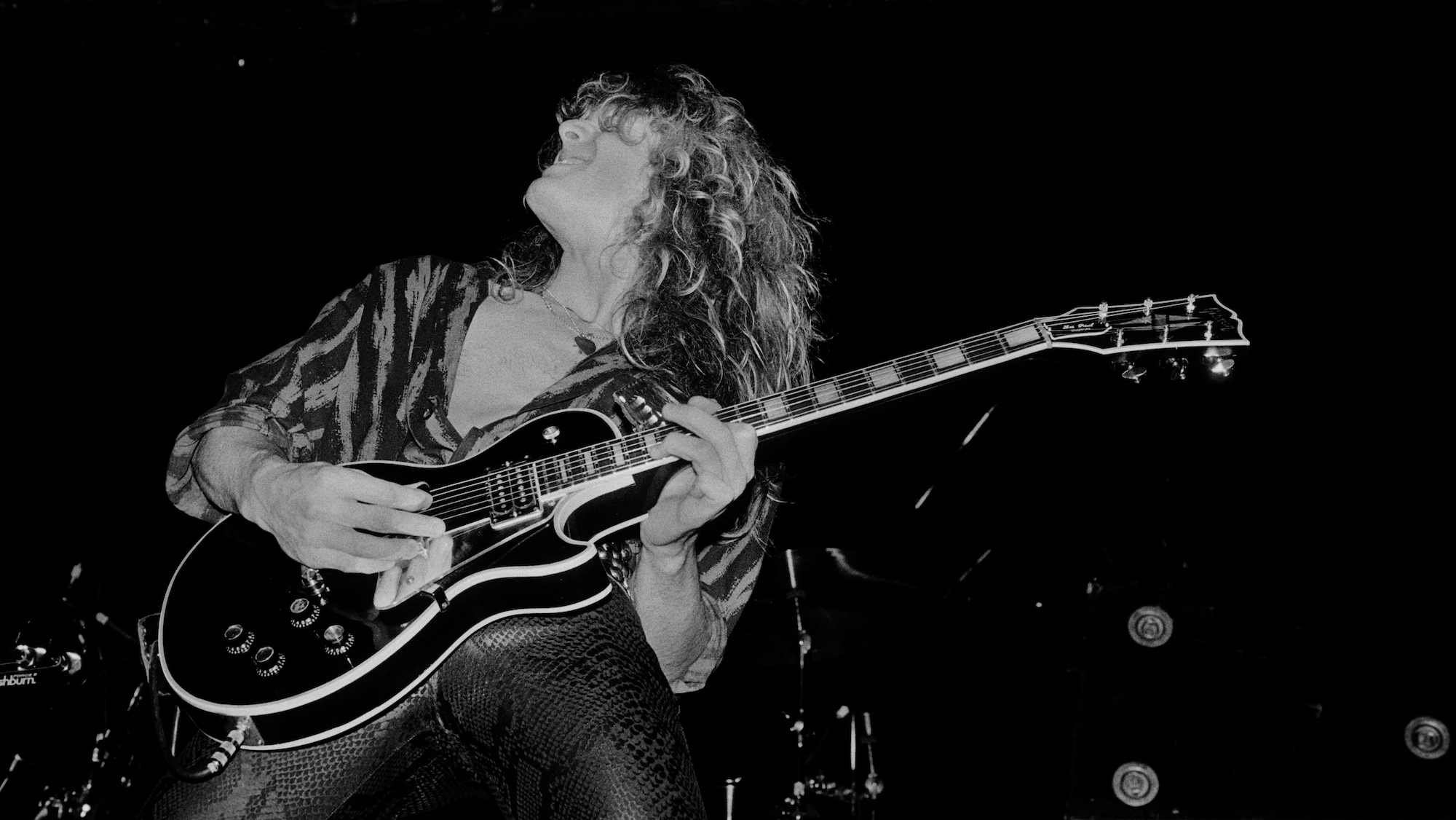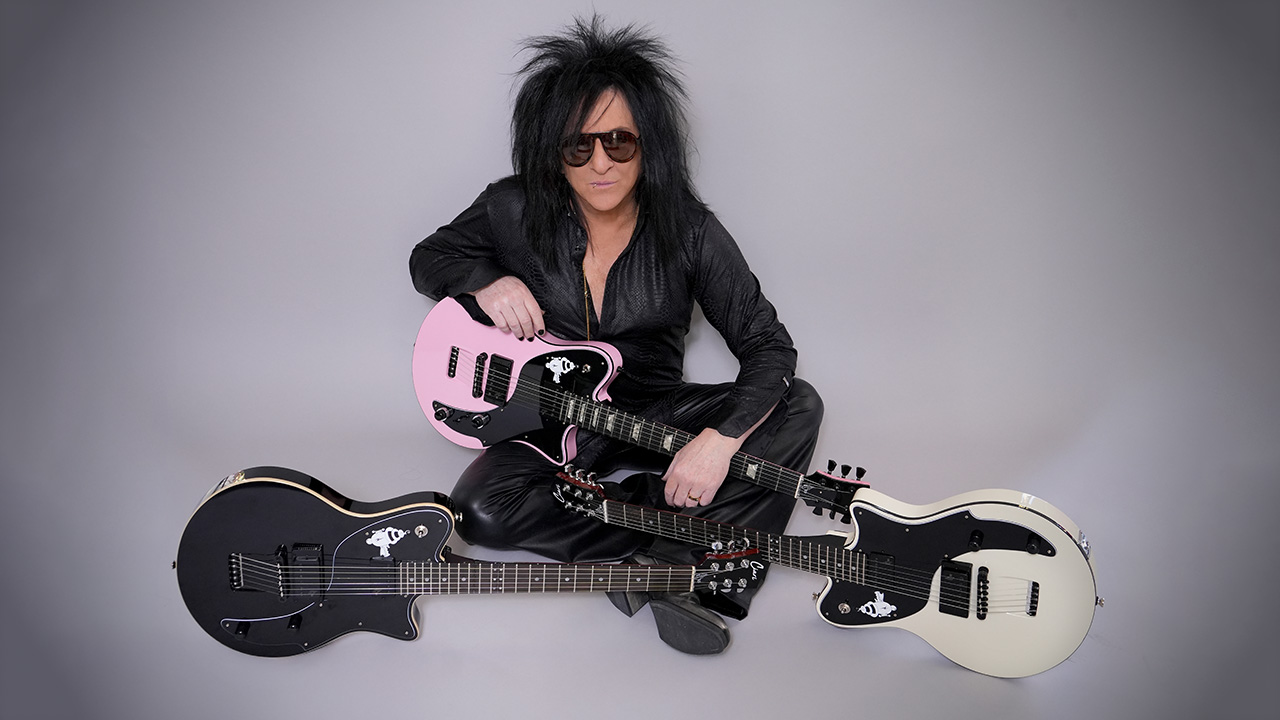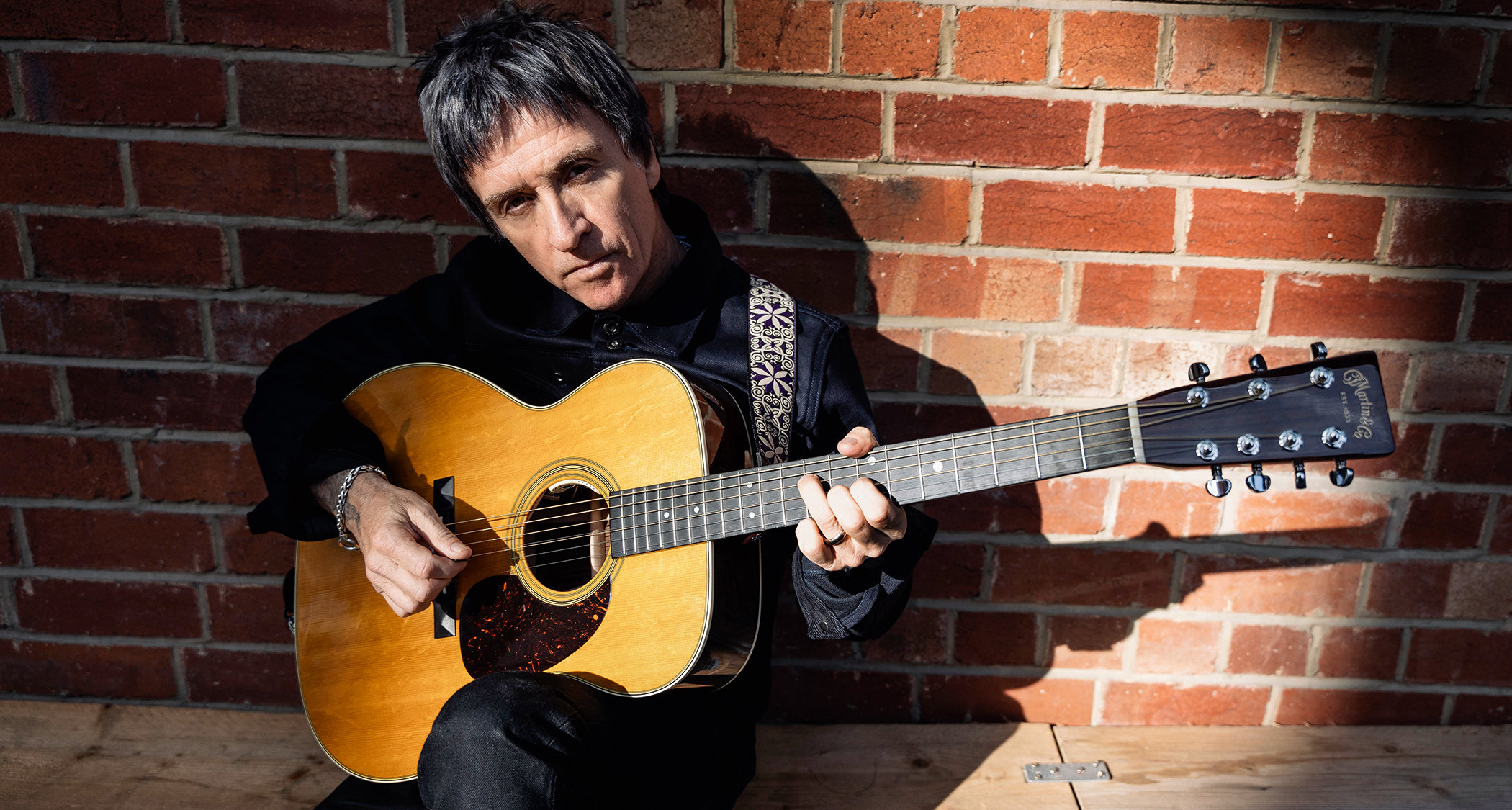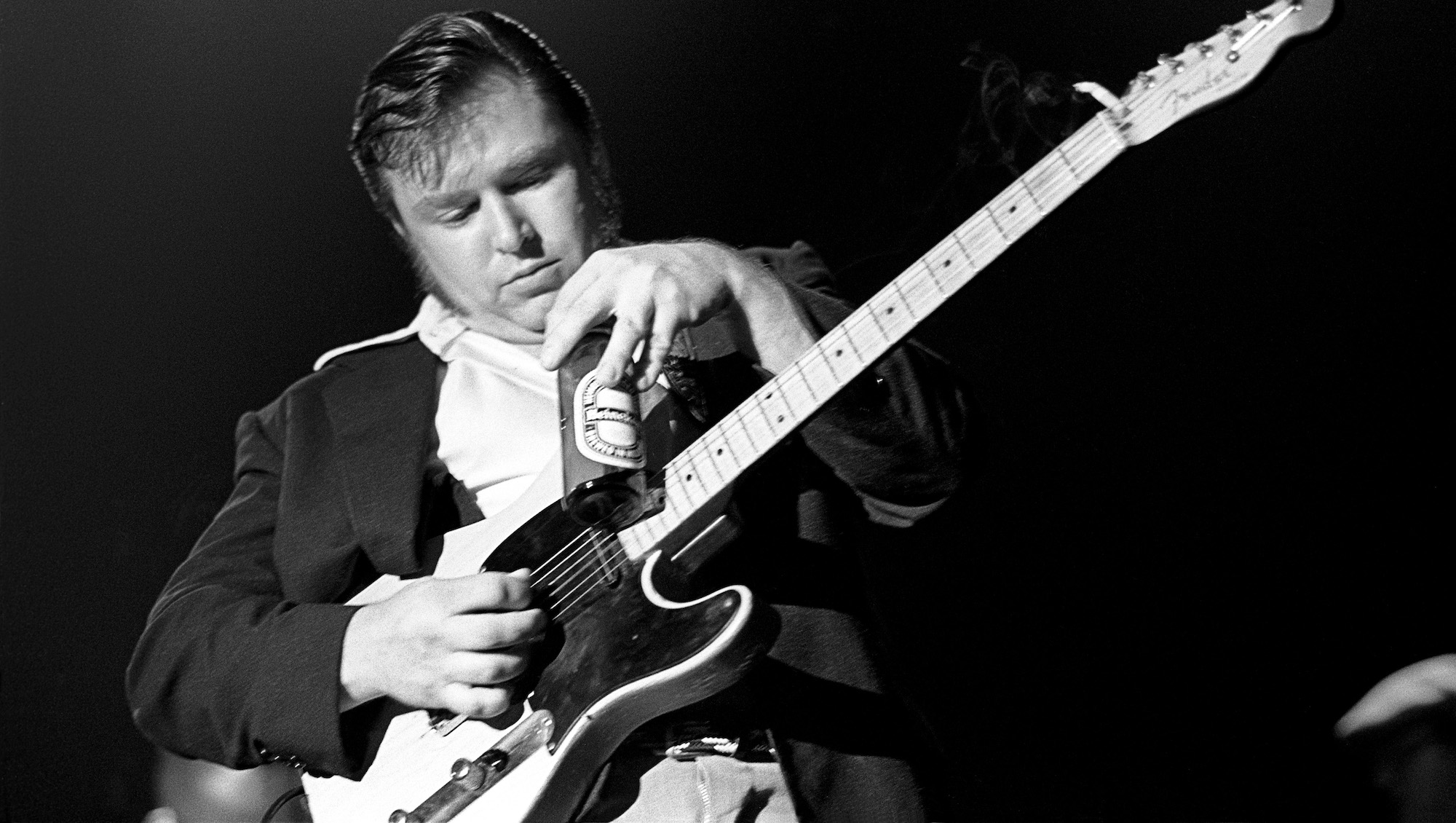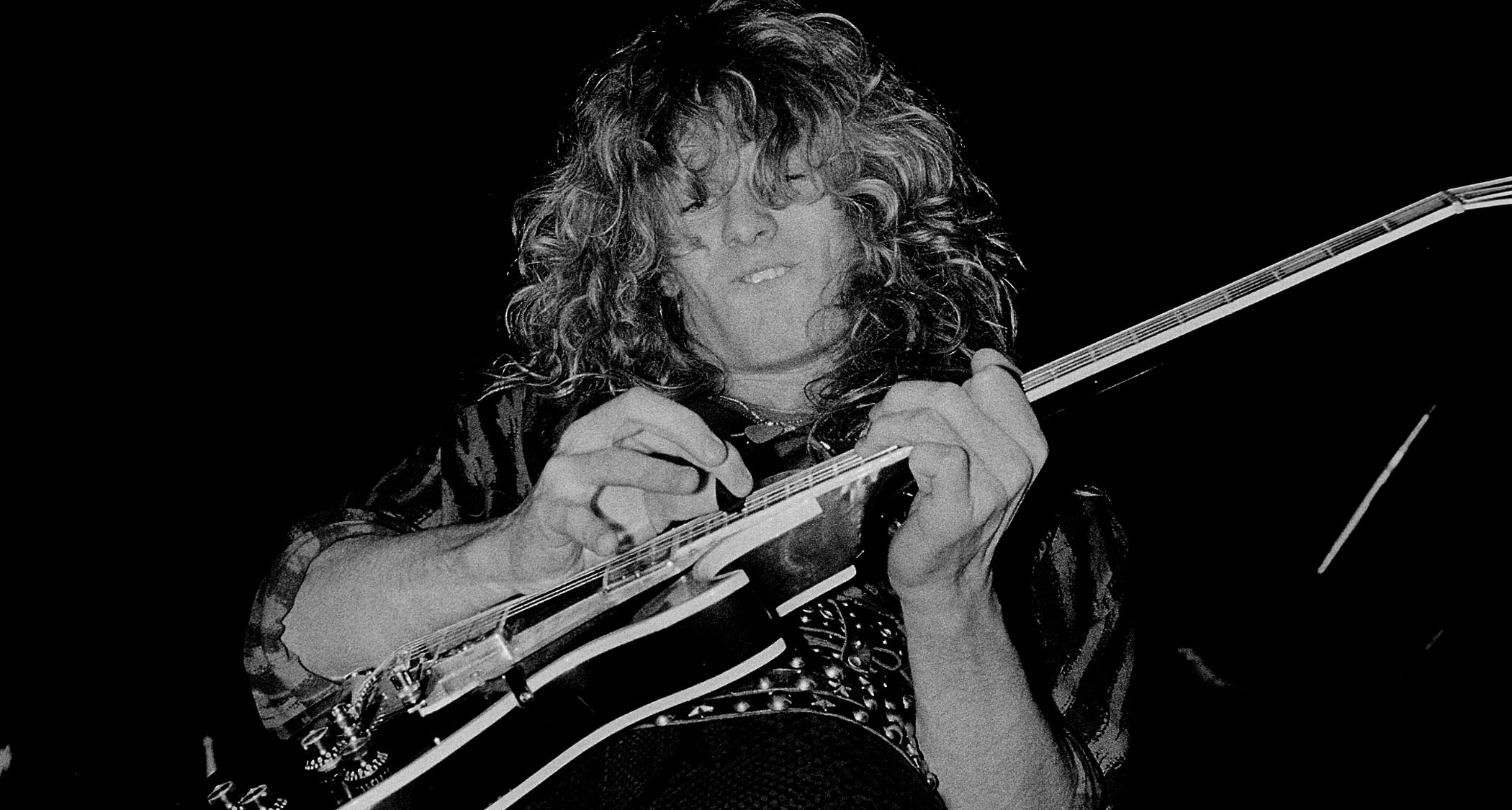I tested the Boss Katana Mini and Katana Mini X side-by-side to find out which is best and whether it's worth upgrading from the original portable amp
We’ve put these two compact amps head to head to see which one offers the best features, tones and build quality for the money
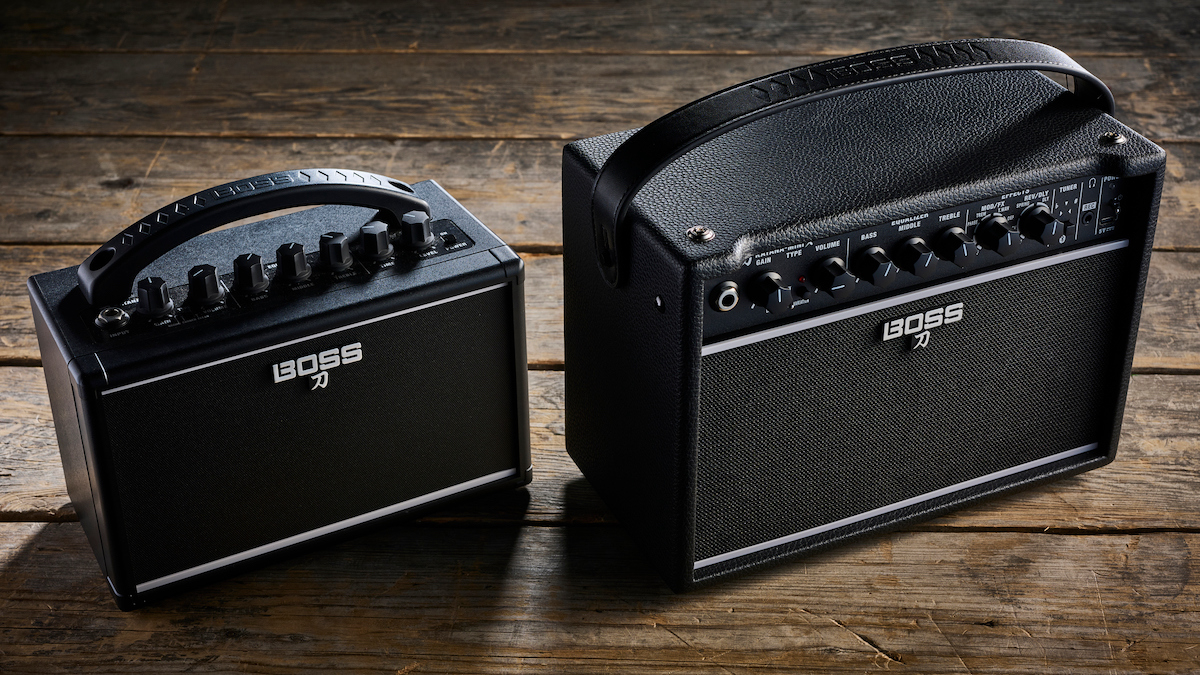
The Boss Katana Mini and Katana Mini X are sometimes mixed up with one another, and many players might wonder what the differences are, or even if there are any at all. And understandably so; they’re both mini, portable guitar amps within the enormously popular Katana series of modeling amps.
The Katana Mini was released back in 2017 and still holds its own against newer portable amps. The Mini X, released in 2024, sees a number of upgrades and bolstered features, but retains its inherent Katana DNA and is still a viable option for musicians on the go.
So, the question is, with a slightly higher price, should you choose the Mini X over the original Mini, or if you already own the latter, should you upgrade? I took them both for a spin side-by-side to see how they match up.
At a glance
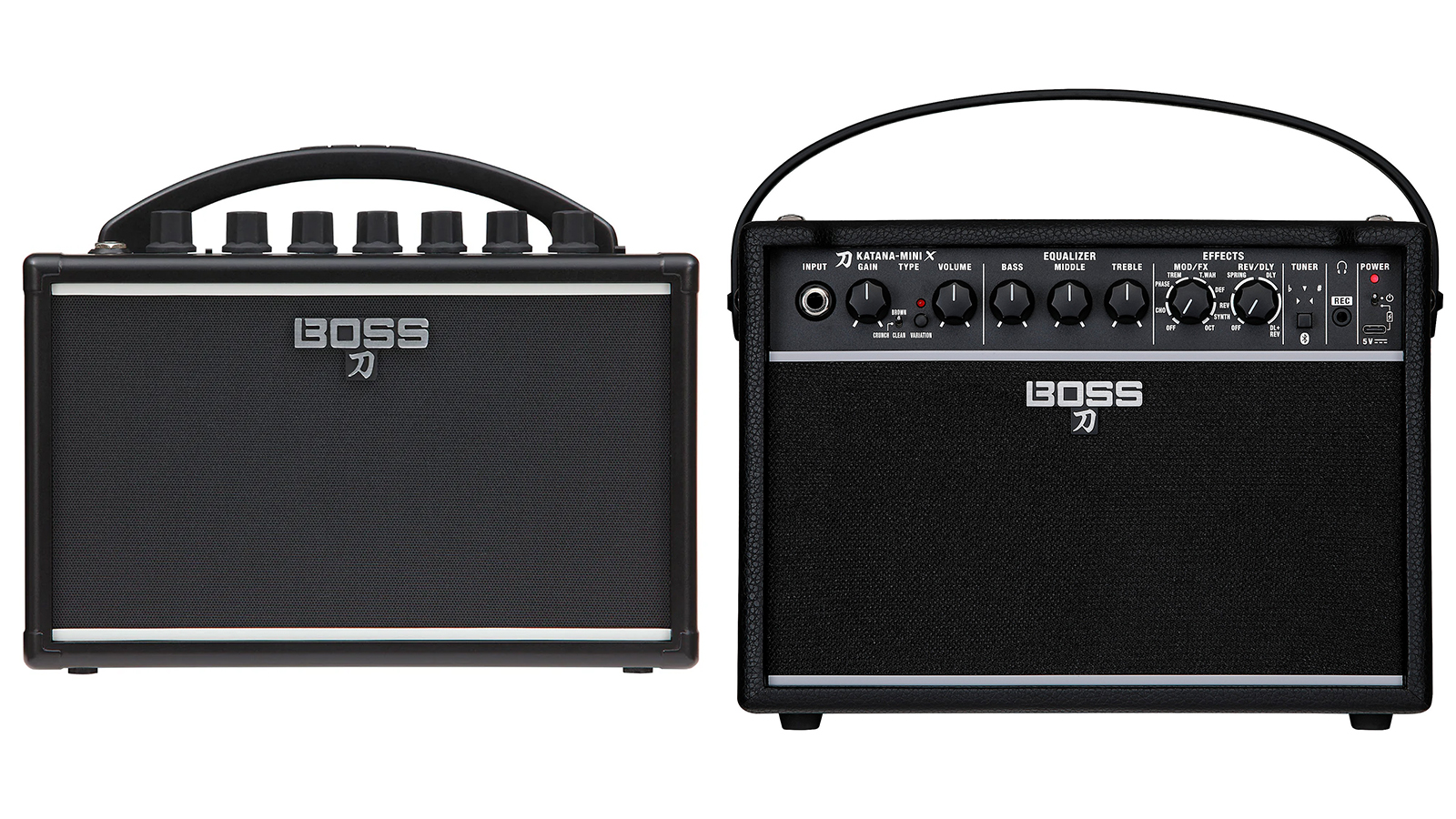
Both of these compact amps offer a range of clean, crunchy and distorted sounds, though you can get a wider tonal palette from the Mini X. It’s a similar tale with effects – the Mini X has quite a number of built-in effects that you can use simultaneously, whereas the Mini offers only delay.
Both amps make for extremely practical home practice amps, or tools for buskers as they’re small, lightweight and portable. The Katana Mini is rated at 7W and has a single 4” speaker. The slightly bigger Katana Mini X boasts 10W and a 5” speaker.
Could you gig with either of them? You’d struggle with the smaller of the two, but with a PA, you’d likely get away with the Mini X so long as you don’t need too much volume.
In terms of the wider market, you’d compare the Mini to the likes of the Blackstar FLY 3 and the Positive Grid Spark GO, whereas the Mini X compares more to amps like the Spark Mini/Spark 2 or the Blackstar ID Core BEAM.
Get The Pick Newsletter
All the latest guitar news, interviews, lessons, reviews, deals and more, direct to your inbox!
Spec comparison
Boss Katana Mini
- Price: $100/£85
- Power rating: 7W
- Amp models: Clean, Crunch, Brown
- Effects: Delay
- Power: 6 x AA batteries or separate 9v adapter (Roland PSB-1U)
- Controls: Gain, Amp switch, Volume, Bass, Middle, Treble, Delay Time, Delay Level, Power switch
- Connections: Input, Phones/Rec output, aux input
- Weight: 1.2kg / 2lbs 11oz
- Size: 230 x 116 x 181mm
- Read our Boss Katana Mini review
Boss Katana Mini X
- Price: $150/£145
- Power rating: 10W
- Amp models: Clean, Crunch, Brown plus Variation switch for each
- Effects: Reverb, Delay, Chorus, Phaser, Auto-Wah, Octave, Synth, Defretter
- Power: Rechargeable battery, or USB-C
- Controls: Gain, Amp switch, Variation button, Volume, Bass, Middle, Treble, Mod FX, Reverb/Delay, Bluetooth/Tuner button, Power switch
- Connections: Input, Phones/Rec output, USB-C, Bluetooth
- Weight: 2.7kg / 6lbs
- Size: 287 x 145 x 200mm
- Read our Boss Katana Mini X review
Hardware and features
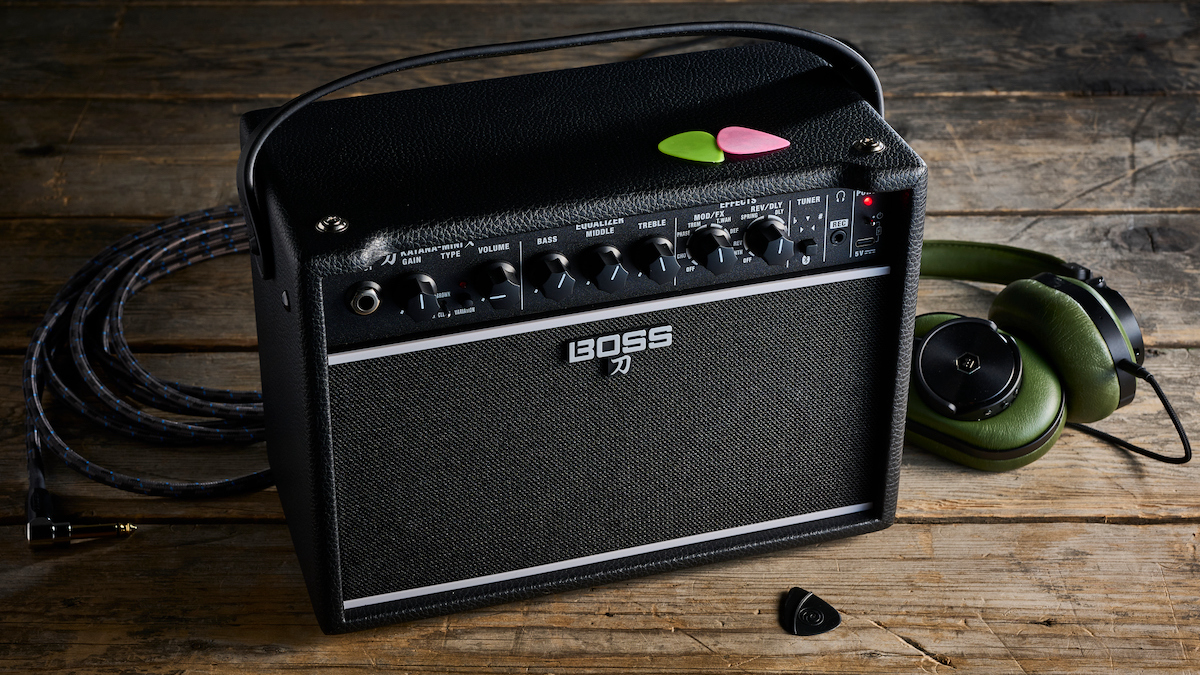
Both amps are fairly feature-laden, considering their size. Both have multiple amp models on board, a three band EQ and an effects section. They’ve also both got a headphone output that doubles as a recording output.
The Katana Mini X does have a number of features not seen on its smaller sibling, though. First up, it’s got Bluetooth, so you can wirelessly play music through it. It’s also got a guitar tuner on board which is very useful. The bigger amp also has a more comprehensive effects section.
With the Mini X, there are two effects categories that can be used simultaneously. The first is modulation/general effects, so things like phaser, chorus, octave – even a synth sound. Then you’ve got a section dedicated to reverb and delay (you can have delay and reverb at the same time, as well as a modulation). Compare that to just delay on the Katana Mini.
Both the Katana Mini and Katana Mini X can be run without mains power. The Mini runs on 6 x AA batteries, and the Mini X has a built-in rechargeable lithium battery which is charged via USB-C. You can use both amps whilst plugged in, though, if you’re playing at home.
Winner: Katana Mini X
Undoubtedly, the Katana Mini X is the winner here. It has everything the Mini has, and more.
Build quality and design
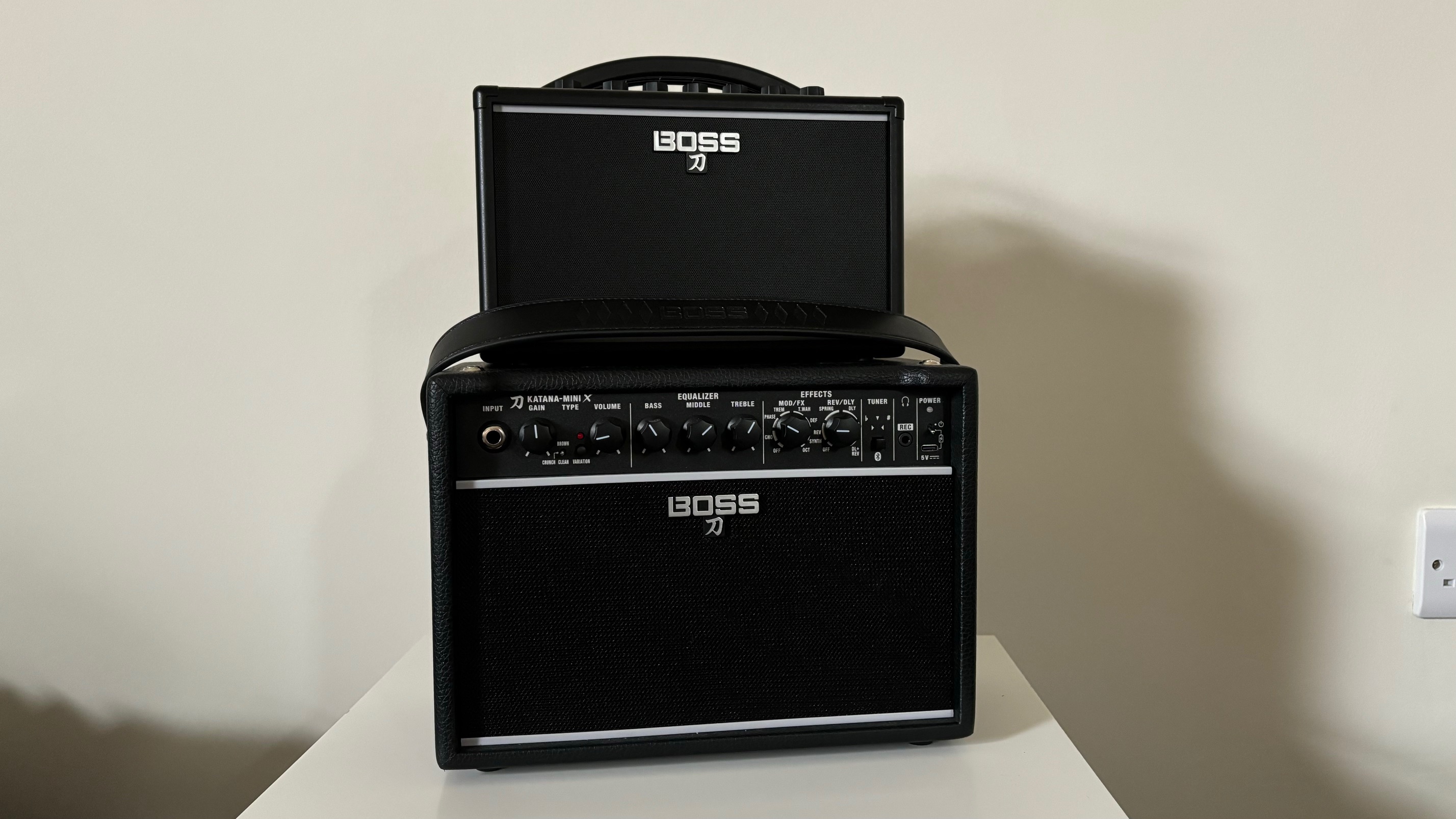
Boss is known for producing well-built gear, and both of these amps are no exception. That said, there is a hierarchy as far as the Mini amps are concerned.
The Katana Mini has a plastic outer. It feels sturdy and it’s well made, but it’s plastic nonetheless – if something fell onto it, there’s a good chance it would crack.
The Mini X looks and feels a lot more like a traditional guitar amp. It’s got a wooden shell, that’s then covered in tolex – it’s a lot more in line with the full sized Katana amps in terms of design, and it feels a lot more durable. If you were going out on tour and wanted something to practice backstage with, you’d probably feel more comfortable throwing the Mini X in the van.
Both of the amps have handles, though the Mini’s plastic handle is built into the amp so cannot be removed. The Mini X has a faux leather handle which you can take off, if you want.
If you’re seeking portability, the Katana Mini is smaller and lighter – 230 x 116 x 181mm & 1.2kg compared to 287 x 145 x 200mm & 2.7kg on the Mini X.
Winner: Katana Mini X
Whilst the Mini wins in terms of being lighter and smaller, the higher build quality and overall feel of the Mini X makes it worth the extra weight and size.
User Interface
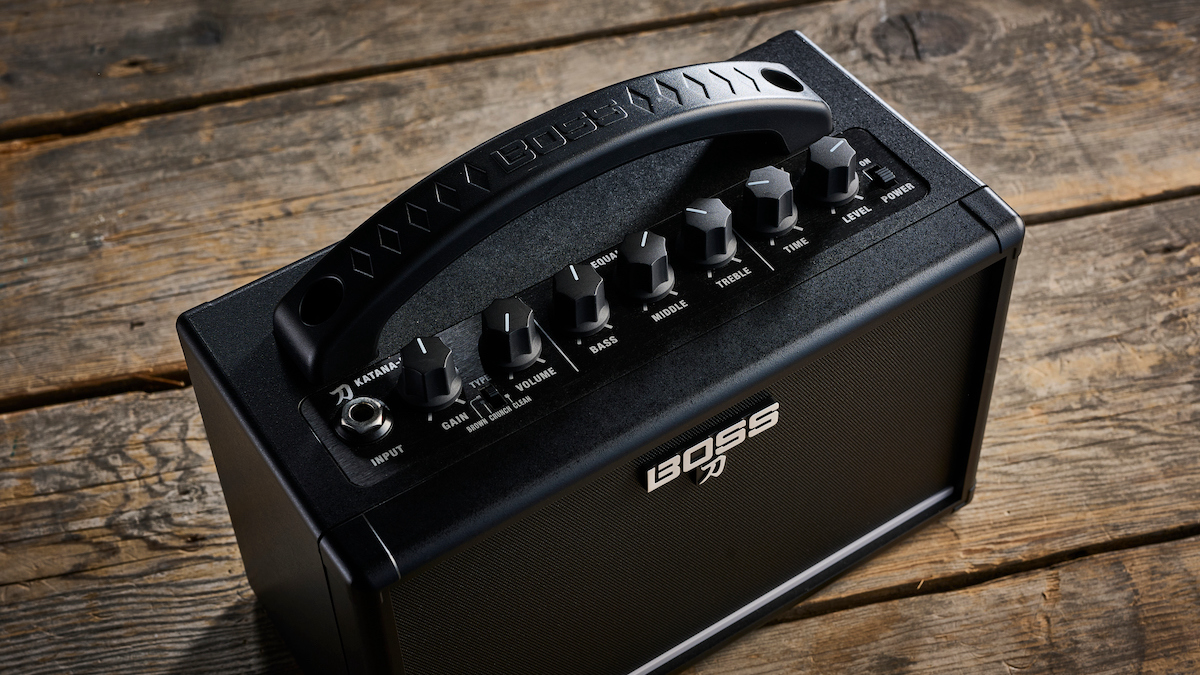
What is great about both of the amps is that they’re really easy to use. Everything is laid out in front of you and all parameters are controlled by knobs and switches – there’s not an LCD menu screen in sight. Even the more advanced effects section on the Mini X is easy to dial in.
Neither allows for any preset options, so it’s just a case of choosing your amp type and then dialing in your sound from there.
One difference is that the Mini X has the controls on the front of the amp, including the headphone output and USB slot, whereas the Mini has the amp controls on top, and outputs on the back.
Winner: Draw
Both amps are super easy to use and do away with any unnecessary bells and whistles.
Sound
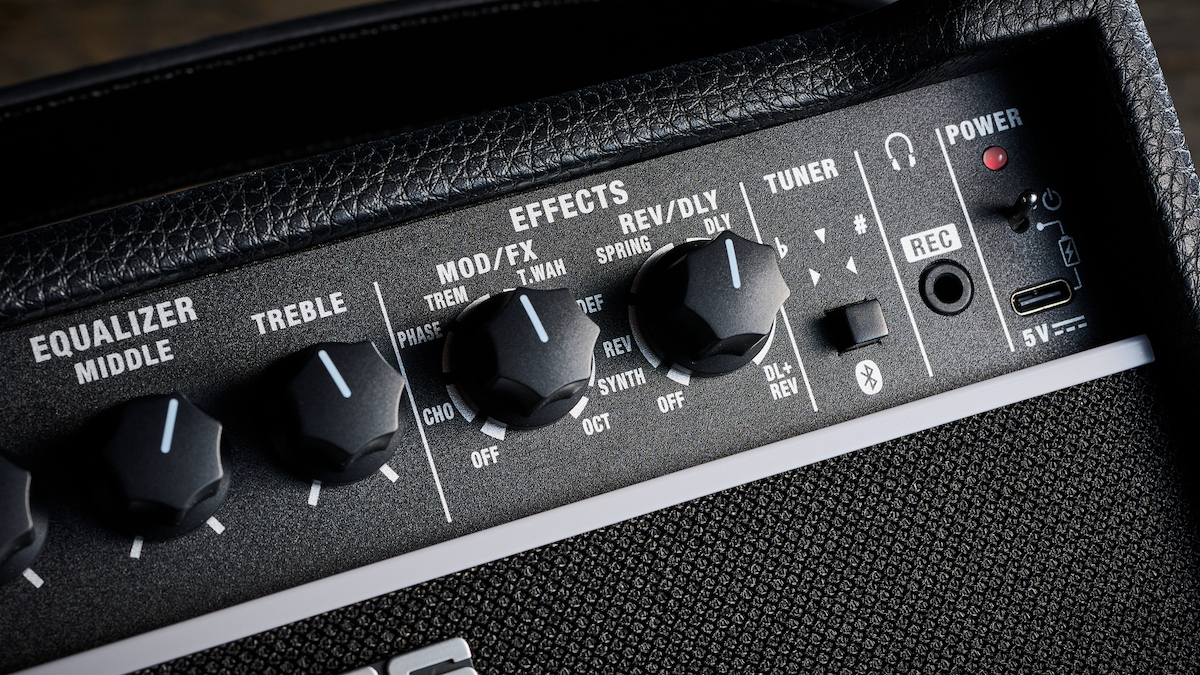
Over the years, The Boss Katana has become a much-loved affordable amp that sounds great for pretty much any style of playing, so do the mini versions do it justice?
When talking about the Katana Mini, it feels necessary to preface a summary: “For its size… it sounds great.” And it does; for such a little amp, you can get a big tone. Clean, crunchy and distorted tones sound clear, with a surprising amount of bottom end. However, you do experience some of that boxy sort of sound that you usually get with very small amps.
The Mini X on the other hand just sounds great – no preface necessary. Despite the speaker only being 1” bigger, it sounds more like a full-sized amp. It sounds fuller, richer, clearer and just generally better.
The Mini X also has more amp sounds available. Both share the Clean, Crunch and Brown amp models, but the Mini X has a Variation switch, as on the Katana MK2 onwards, so you essentially get six models instead of three. These variations aren’t wildly different, but they’re definitely nice to have – I found that most of my favorite settings were with the Variation switch engaged.
The effects section is also better on the Mini X. Having delay is nice on the Mini, but I would imagine for most players, reverb may be more useful. The Mini X has some really nice reverb options, as well as a great range of modulations and more.
You can also get more volume from the Mini X. The difference is only 3W, but the larger of the two can put out considerably more volume. If you’re busking then you’d definitely want the Mini X as you’re more likely to be heard, plus you’ll get more clean headroom before your signal starts to distort.
Winner: Katana Mini X
The larger of the two amps sounds better, plus you’ve got more volume available and a wider range of sounds to choose from.
Verdict
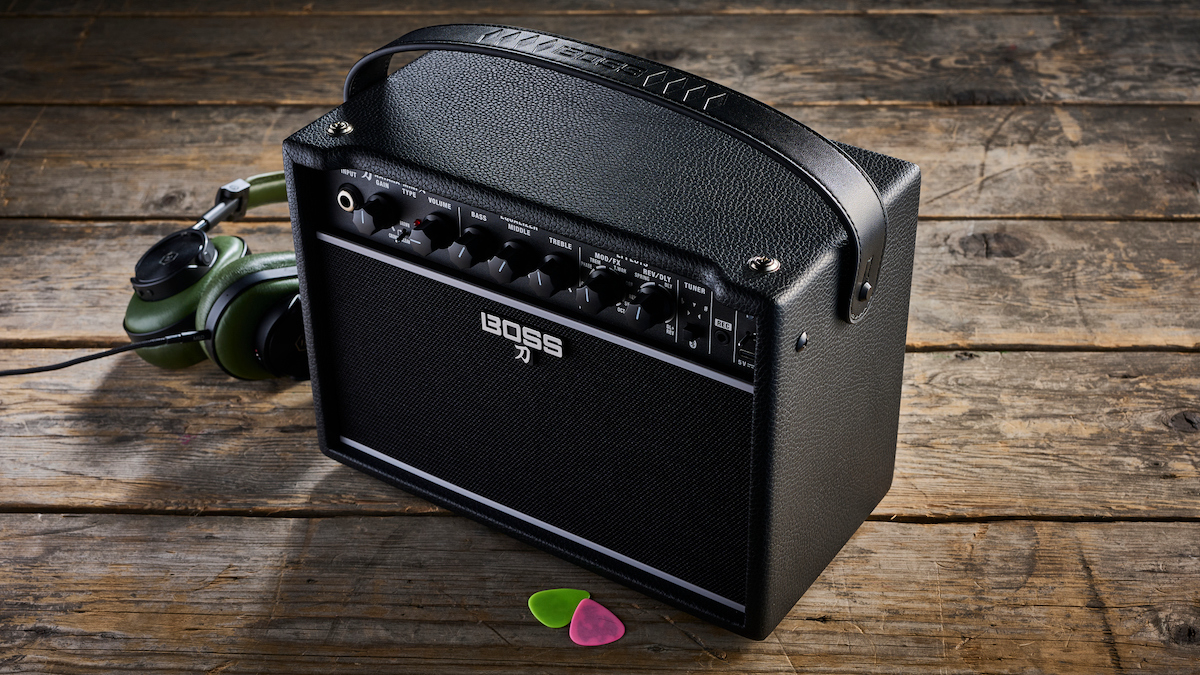
The Katana Mini X came around seven years after the original Katana Mini and has definitely undergone a number of upgrades. It sounds better, plus you can get a wider range of tones from it. It’s got more volume and more bottom end, plus it can double as a Bluetooth speaker.
It is a touch bigger and heavier than the original Mini though. So, if portability is your number one consideration, then the Mini, with its smaller dimensions, might be the winner for you. It is worth remembering, though, that if you’re using it without mains power, you’ll have to use six AA batteries with the Mini, whereas the Mini X includes a rechargeable battery.
There’s also cost to consider. The Mini X comes in at nearly double the price of the Mini in some places. Is it worth it? Honestly, yes. It feels and sounds more like a proper amp, but it’s still extremely portable and compact. Whichever Katana Mini you go for though, you’re getting a really good and versatile little amp!
After spending a decade in music retail, I’m now a freelance writer for Guitar World, MusicRadar, Guitar Player and Reverb, specialising in electric and acoustic guitars, bass, and almost anything else you can make a tune with. When my head’s not buried in the best of modern and vintage gear, I run a small company helping musicians with songwriting, production and performance, and I play bass in an alt-rock band.
You must confirm your public display name before commenting
Please logout and then login again, you will then be prompted to enter your display name.
"I never use my tube amp at home now, because I have a Spark Live": 5 reasons you should be picking up the Positive Grid Spark Live in the massive Guitar Month sale
“Our goal is to stay at the forefront of amplification innovation”: How Seymour Duncan set out to create the ultimate bass amp solution by pushing its PowerStage lineup to greater heights



